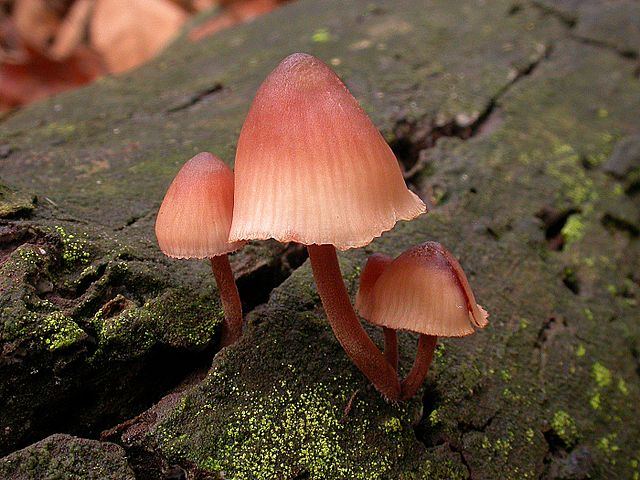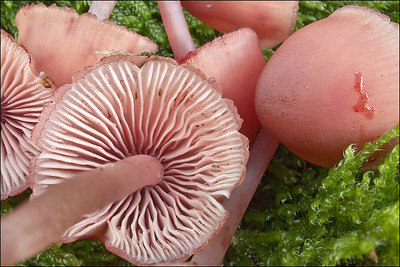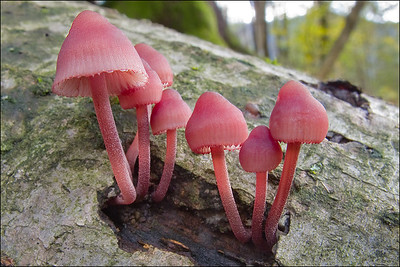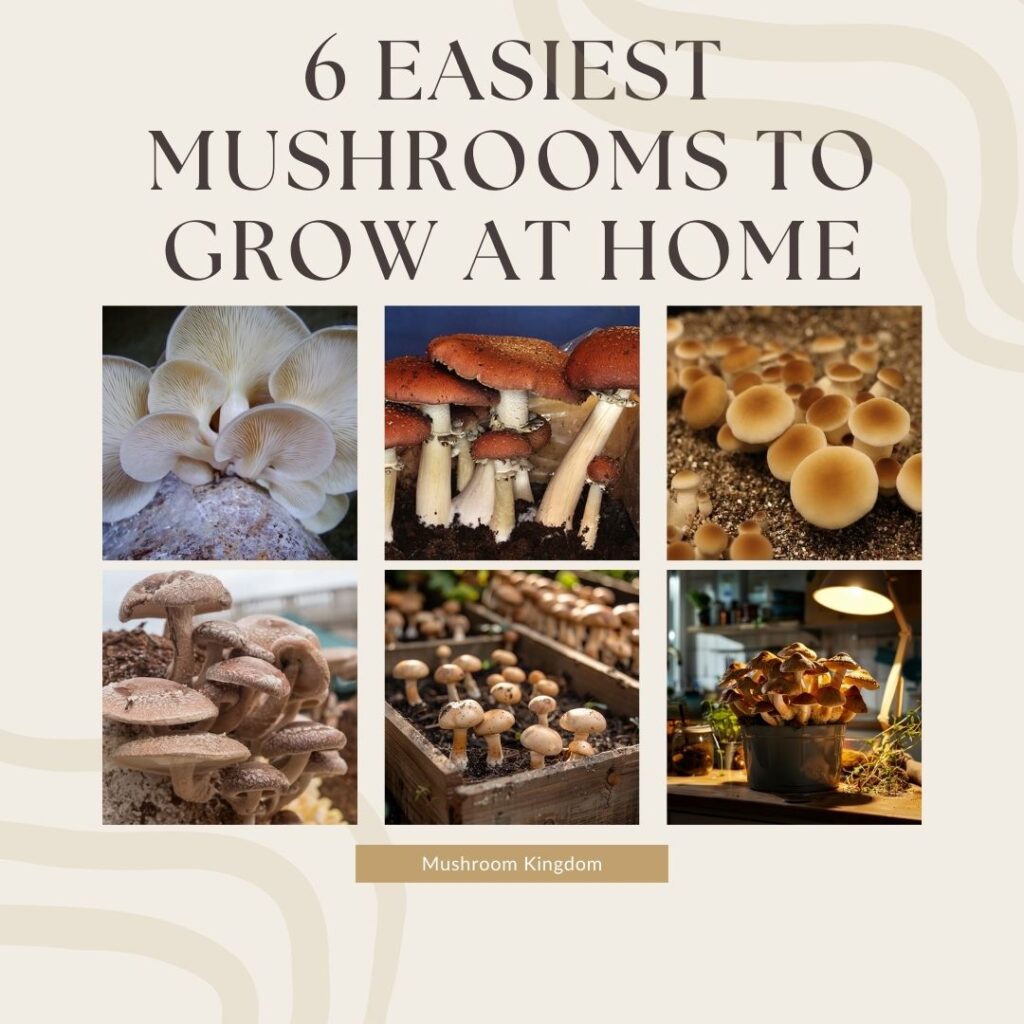Mycena haematopus, commonly known as the bleeding fairy helmet, is a small, reddish-brown mushroom that exudes a distinctive blood-red latex when cut or broken.
Let’s further explore this fascinating fungi
How To Identify Mycene haematopus In The Wild?
Identifying Mycena haematopus, also known as the bleeding fairy helmet or bleeding mycena, can be an enjoyable and rewarding experience for any mushroom enthusiast. This unique species stands out for several distinctive characteristics, making it easier to spot if you know what to look for.
Cap Characteristics
The cap of Mycena haematopus begins as conical or bell-shaped in its youth. As the mushroom matures, the cap broadens, often becoming nearly flat but usually retaining a slight central bump known as an umbo.
You might notice the edges becoming wavy or scalloped over time.
Color-wise, the cap exhibits a range from reddish-brown to purplish, typically darker at the centre and lighter towards the edges.

When moist, the cap may appear somewhat translucent, revealing radial lines that give it a striated look. As the cap dries, it loses some of its vibrancy and becomes more matte. The cap’s diameter generally spans from 1 to 3 cm, although in particularly favorable conditions, it can grow larger.
Gills
The gills of Mycena haematopus are another key identifying feature. They attach to the stem in an adnate to slightly decurrent manner, meaning they connect to the stem and might run down it slightly.

These gills are closely spaced and relatively narrow. Initially, they appear whitish or pale pink but tend to darken to a reddish or brownish hue as the mushroom ages or if they are bruised.
Stem
One of the most distinctive characteristics of Mycena haematopus is its stem. Matching the cap, the stem is reddish-brown to purplish and darkens toward the base. The stem surface can be smooth or finely hairy, adding to its unique texture. Typically, the stem measures between 4 to 8 cm in length and about 2 to 4 mm in thickness.
What sets this mushroom apart is its bleeding trait. When the stem is cut or broken, it exudes a blood-red latex. This feature is not only fascinating but also a crucial identification marker. The stem itself is hollow and relatively fragile, sometimes appearing twisted or bent with age.
Spore Print
For those who want to be thorough, obtaining a spore print can confirm your identification. The spore print of Mycena haematopus is white. To get a spore print, place the cap gill-side down on a white piece of paper or glass, cover it with a bowl or cup to prevent air currents, and leave it for several hours or overnight. The resulting spore deposit will reveal the spore print color.
Habitat and Ecology
Mycena haematopus thrives on decaying hardwood logs, stumps, and branches, with a preference for oak, beech, and other broadleaf trees. You’ll typically find this mushroom in moist, shaded forests and woodlands, particularly in temperate regions from late summer to autumn. It often grows in small clusters or scattered groups, rarely appearing as a solitary specimen.
Additional Features
Mycena haematopus has a mild or indistinct odor, which doesn’t significantly aid in its identification but complements the overall sensory experience of encountering this mushroom. Although it is considered inedible due to its small size and lack of substantial flesh, the bleeding fairy helmet remains a fascinating find for any mushroom hunter.
Where Does It Grow?
thrives in moist, shaded forests and woodlands, where it plays a crucial role in the decomposition of organic material.
Environment
You’ll often find this mushroom in areas with high humidity, such as damp forests where the air remains consistently moist. The shade provided by dense forest canopies helps maintain these humidity levels, creating an ideal environment for the mushroom to grow.
Substrate
In terms of substrate, Mycena haematopus has a strong preference for decaying hardwood. It commonly appears on fallen logs, stumps, and branches of trees like oak, beech, and other broadleaf species.
The decaying wood offers the nutrients necessary for the fungus to thrive. Interestingly, this mushroom typically colonizes wood that is well into the decomposition process, indicating a later stage of decay.
Locations and season
In North America, you can find it throughout the United States and Canada, particularly in deciduous and mixed forests.
In Europe, it is prevalent from the United Kingdom and Ireland to central and northern countries like Germany, France, and Scandinavia. The mushroom also appears in temperate parts of Asia, including Japan and China, and can occasionally be found in Australia and New Zealand.
Seasonally, Mycena haematopus emerges from late summer to autumn. The exact timing may vary depending on local climate conditions, but generally, you can expect to see these mushrooms during periods of increased rainfall and moderate temperatures, which are conducive to fungal growth.
Is Mycena Heamatopus Edible?
Mycena haematopus is not considered edible. While it is not classified as poisonous, there are several reasons why it is not recommended for consumption.
Its small size and delicate structure make it impractical as a food source. The cap, which rarely exceeds 3 cm in diameter, provides very little flesh, making it more of a forager’s curiosity than a substantial meal.
Also, the stem, although interesting due to its bleeding red latex, is also thin and fragile, adding to its impracticality as an edible mushroom.

Secondly, there is a general lack of information on the culinary properties of Mycena haematopus.
Unlike well-documented edible mushrooms such as chanterelles or morels, this species has not been extensively studied for its edibility. In the world of mushroom foraging, it is always best to err on the side of caution.
Consuming mushrooms without a clear understanding of their effects can lead to adverse reactions, ranging from mild digestive discomfort to more serious health issues.
Moreover, many mushrooms in the Mycena genus contain varying degrees of toxic compounds. Its relatives include species that can cause gastrointestinal upset if ingested. This further supports the caution advised against consuming this mushroom.
Interesting Facts About Mycena Heamatopus
Here are some interesting facts about this unique species:
1. Bleeding Latex
One of the most striking features is its ability to “bleed” a blood-red latex when the stem or cap is cut or broken. This distinctive trait is not only visually interesting but also helps in identifying the mushroom in the wild. The red latex is a defense mechanism that may deter herbivores and insects from eating the mushroom.
2. Bioluminescence
While not as commonly observed as in some other Mycena species, there have been occasional reports of bioluminescence. Some related species in the Mycena genus can emit a faint glow in the dark due to a chemical reaction involving the enzyme luciferase. This bioluminescence is often more pronounced in the mycelium rather than the fruiting bodies.
3. Ecological Role
Mycena haematopus plays a significant role in forest ecosystems as a saprotroph. It decomposes dead wood, particularly hardwood, helping to recycle nutrients back into the soil. This decomposition process is essential for the health and sustainability of forest environments, contributing to the breakdown of organic matter and nutrient cycling.
4. Widespread Distribution
This mushroom is found in temperate regions across the globe, including North America, Europe, and parts of Asia. Its ability to thrive in a variety of forested habitats highlights its adaptability and ecological importance. You can find it growing on decaying hardwood logs, stumps, and branches in moist, shaded areas.
5. Aesthetic Appeal
With its reddish-brown to purplish cap and the unique bleeding feature, it is visually captivating. It often grows in clusters, creating picturesque scenes on the forest floor, especially when viewed against the green backdrop of moss and fallen leaves.
6. Small Size
It is a relatively small mushroom, with caps typically ranging from 1 to 3 cm in diameter and stems measuring 4 to 8 cm in length. Despite its diminutive size, its distinctive features make it easily recognizable to mushroom enthusiasts.


